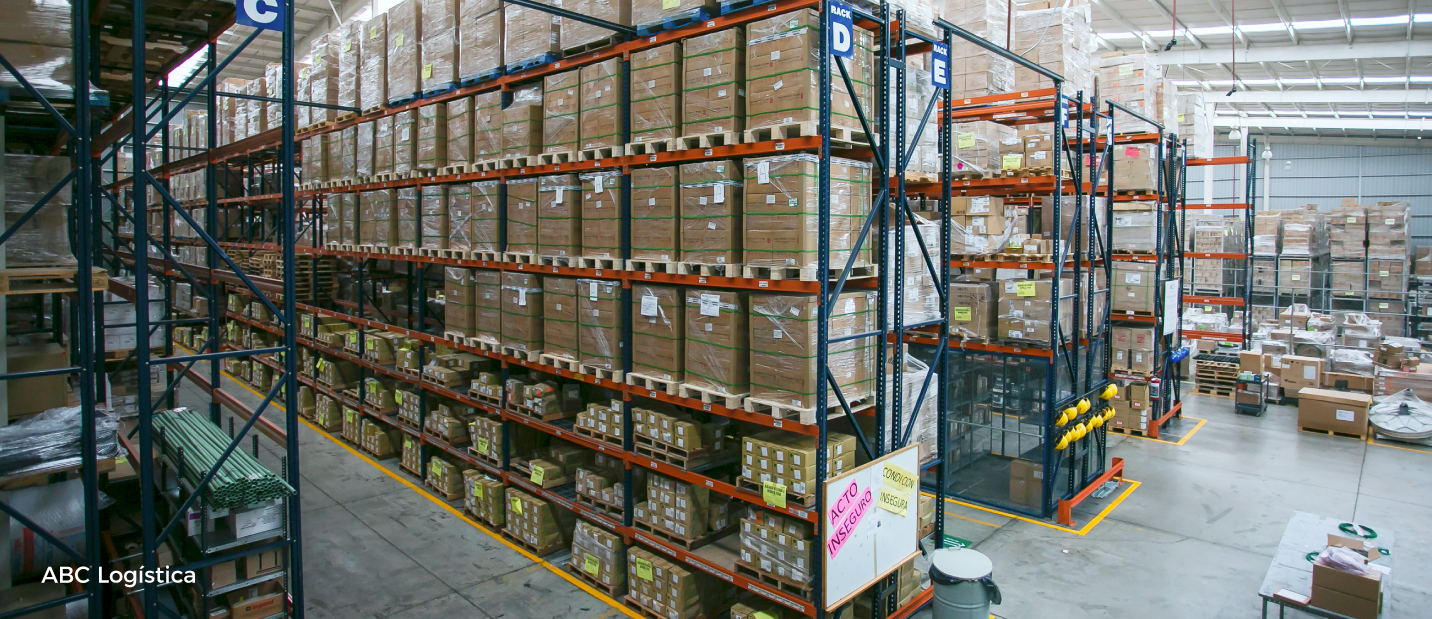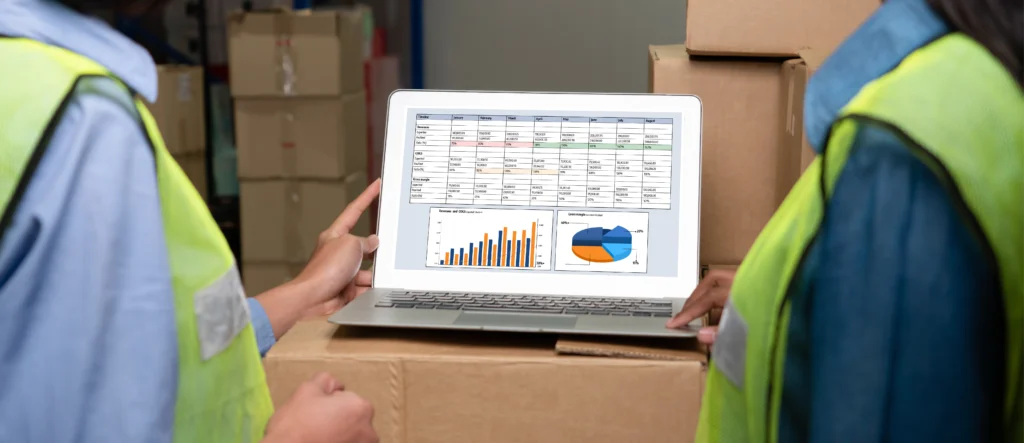
El término de logística nos ha acompañado desde tiempos de postguerra -en especial de la 2da guerra mundial- cuando se hizo necesaria la distribución de municiones y provisión de alimentos a las tropas que cruzaban por vía marítima y terrestre durante los años que duraron los combates. La cooperación que llegaba desde diferentes continentes y la dispersión de los ejércitos y retos de comunicación hizo necesaria la planeación de inventarios, el almacenaje y la distribución.
Después de la 2da guerra mundial, puede ser que la mayor transformación en la logística la provocó el nacimiento del internet y un tercer cambio significativo provocado por la situación generada por el covid-19.
México se ha convertido en los últimos 5 años en el hub del ecosistema de startups suramericano y se fortaleció durante los años de pandemia, incrementando la demanda de talento -especialmente perfiles de desarrollo de software-, m2 para la creación de almacenes y unidades para la distribución.
La mayoría de las empresas establecidas en el país son mexicanas, estas representan solo al 36% de los inquilinos de parques industriales afiliados a la AMPIP, frente al:
- 33% de Estados Unidos
- 20% Europeas
- 2% de Canadá
- 2% de China y subiendo
El salto de reactivación en la economía y el despertar de todas las tecnologías luego del 2020, han revelado que entre 10 y 15% del total de metros cuadrados era la media de ocupación de los almacenes en las empresas antes de la pandemia. Hoy rebasa 30% y del 34% de ocupación por parte de empresas del sector logístico se puede identificar que 10% son sólo empresas de comercio electrónico.
Por fin la ‘profecía’ que recae sobre la logística de almacén es atendida y comienza el ‘culto’, que para marchar al ritmo de esta explosión comercial, se le debe invertir a los operadores logísticos, que son los directos responsables de que toda la promoción y las promesas de tu mercancía, al cabo cumplan su cometido. Que la ‘última milla’ sea toda una especialidad.
Se pueden distinguir distintos tipos de almacenes, en función de cómo se manipulen los productos, se usen los equipos y se apliquen los sistemas de almacenaje.
¿Cómo se clasifican los Almacenes y Cuál es su Logística?
Veremos entonces que en el camino recorrido por la tendencia logística en el nuevo milenio, se han profesionalizado lineamientos generales para cada implementación de almacén o bodega logísticamente hablando. Para ser consistentes, en 5 clasificaciones de partida principales:
SEGÚN LA INFRAESTRUCTURA/EDIFICACIÓN/PARQUE Y/O ESPACIO CUADRADO
Lo cierto es que para esta diferenciación los espacios cerrados predominan en casi todos los casos, por todas las razones: ventilación, seguridad, automatización, conservación. Pero no es contraproducente para ciertos productos, de ciertos modelos de negocio, que requieran de ventilación natural y compaginen mejor el acopio en un espacio a cielo abierto o tipo hangar.
Hablamos de las navieras, por ejemplo, de los fabricantes de aviones o de maquinarias pesadas y/o los grandes productores de materiales.
SEGÚN SU ACTIVIDAD
Para este apartado la pauta es muy clara:
- Cuando la empresa es de naturaleza comercial, también predominante, en esta era de comercio retail y electrónico acaparando la mayor cantidad de necesidades cotidianas de los clientes y que reúne casi a todos los emprendimientos -al menos en una etapa inicial-, son espacios cada día más eficientes e inteligentes que dependiendo del tamaño y dinamismo de la empresa se utilizan sólo como almacén o también para otros procesos logísticos de embalaje, envasado o etiqueta y/o manufactura.
- Para las empresas de naturaleza industrial, la disposición del espacio exige ser mucho más elaborada, ya que de entrada estamos consolidando grandes lotes de mercancía y cumpliendo itinerarios de despacho constantes.
SEGÚN LA FUNCIÓN LOGÍSTICA
Dentro del proceso del layout, la función logística de un almacén, se concierne esta planificación de los procesos y tipos de almacenamiento de mercancía, para ayudar a optimizar toda la distribución, ejecutando un protocolo previo de organización para los envíos.
Esto es, que para procurar las prospecciones de trazabilidad y cumplir todas las promesas de entrega, satisfacción garantizada, existencias y la menor tasa de devoluciones, en nombre de la lógica de los procedimientos, se destacan 4 generales, pero otra vez, según cada bitácora de marca existen muchos más, que podrían diferir en su forma, más no en el objetivo.
- Centros Logísticos (CEDIS)
Aquel en el que se almacenan las materias primas o cualquier elemento necesario para abastecer el proceso de producción y/o comercialización de un determinado producto.
Los almacenes de aprovisionamiento deben garantizar que siempre haya lo necesario para mantener la producción de una fábrica o la entrega de un producto, sin que se interrumpa por inexistencias.
- Almacén Regional o de Distribución Logística:
El principal objetivo de su construcción, es la cercanía con las áreas/zonas/regiones/ciudades de consumo permanente. Para el caso de grandes multinacionales como Amazon -Que ha desarrollado toda metodología en sus ‘centros logísticos’ fundada en el e-commerce-, con cobertura nacional y/o internacional, las franquicias y las grandes superficies, se hacen imprescindibles para sostener su posición en el mercado.
- Almacén Temporal, de Plataforma y/o de ‘Picking’
Se establecen de forma intermitente, estacional o de temporada, según sean las necesidades en casos determinados, ofreciendo un servicio adaptado especialmente para los clientes. También minimizan los niveles de stock en favor del servicio a los clientes, aprovechar tendencias de mercado, responder a pautas publicitarias, etc.
SEGÚN LA PROPIEDAD DEL ALMACÉN
Cómo cada una de estas figuras contractuales lo estipula legalmente, la logística de construcción, disposición y dotación del almacén estará condicionada a la tenencia del espacio cuadrado para su destinación.
Esto se hace muy relevante a la hora del layout o el diseño, pensando en las adecuaciones que sean necesarias para el funcionamiento eficaz de acopio y/o despacho, y así encarar la responsabilidad de crecimiento, reconocimiento y posicionamiento de la marca.

¿Cómo se clasifican los Almacenes y Cuál es su Logística?
- Inventario actualizado
- Reducción en las devoluciones
- Abastecimiento automático
- Espacio en el almacén
- Atención al cliente optimizada
- Trazabilidad de producción
- Menos errores de selección
- Procesos optimizados
Tendencias del Futuro en la Logística del Almacén
El punto es que el almacén de nuestra era se ha convertido en un ‘plus’ de la cadena logística a nivel global. Su diseño y gestión marcan una brecha importante entre las operaciones mediocres y las mejores, lo que representa una oportunidad competitiva en la mayoría de las empresas, tomando en cuenta que desde 2021 y hasta el 2025 el comercio electrónico crecerá un 96% en América Latina.
Automatización, big data, inteligencia artificial y blockchain, son las nuevas herramientas en la logística. Sistemas avanzados de gestión de almacenes, conocidos como WMS o SAG, que desde ya son una herramienta descrestante para cubrir las necesidades de un almacén, pensando además en sostenibilidad y responsabilidad social. Tendencias premisa de Reciclaje y buen uso de los materiales, almacenes verdes, y lo más prometedor y apremiante: transporte ecológico.
Vehículos autónomos, distribución con drones, uso de bicicletas y segway, confirman todo un sistema de control de inventarios, información de seguimiento y toda la logística de un almacén efectivo para hacer lo único que se debe hacer. Lo más importante: Cumplir con la entrega correcta y puntual de los pedidos.
Si deseas un servicio logístico integral ABC Logística puede ser el aliado para tus negocios.
Referencias
- https://www.scmlogistica.es/tipos-de-almacen-y-sus-caracteristicas/
- https://www.transeop.com/blog/El-almacen-logistico/171/
- https://sell.amazon.com/es/learn/ecommerce-fulfillment
- https://www.noegasystems.com/blog/almacenaje/el-almacen-y-la-funcion-logistica-en-la-empresa
- https://barcelona-logistica.es/en/what-is-storage-logistics/
- https://www.il-latam.com/blog/articulos-centrales/2022-el-ano-de-la-adaptacion-en-el-sector-logistico-2/





